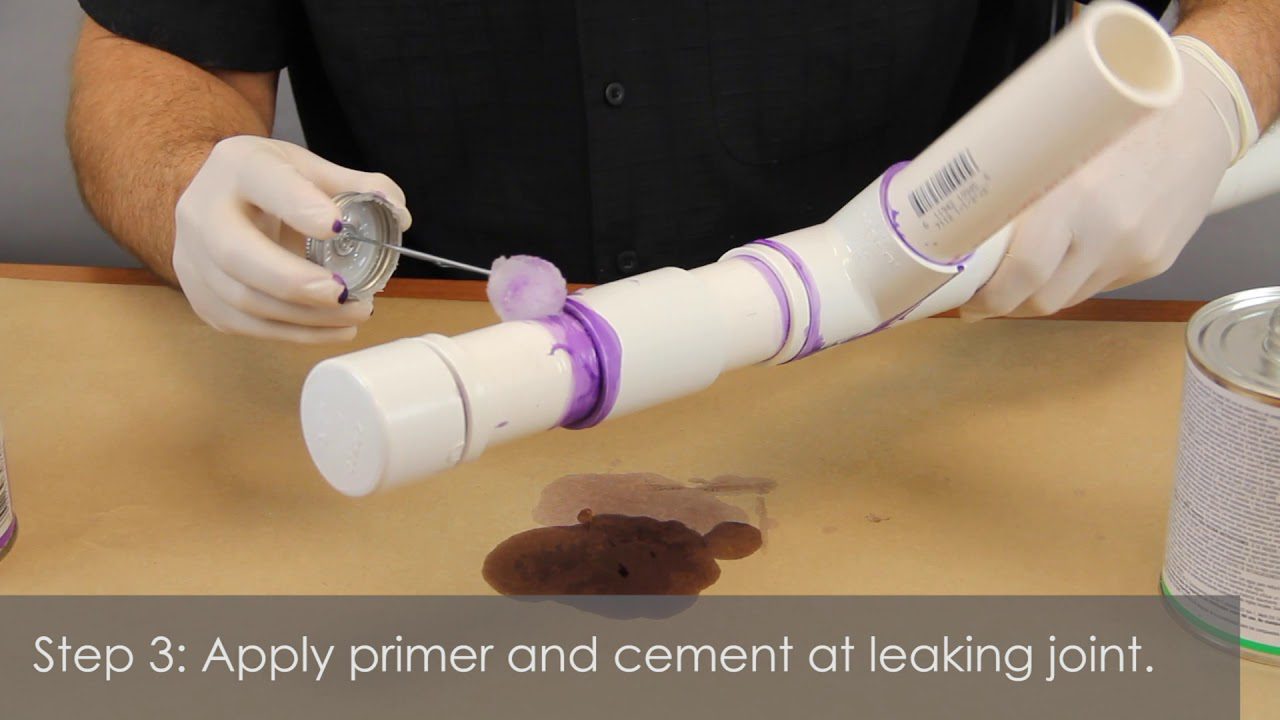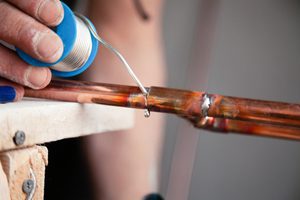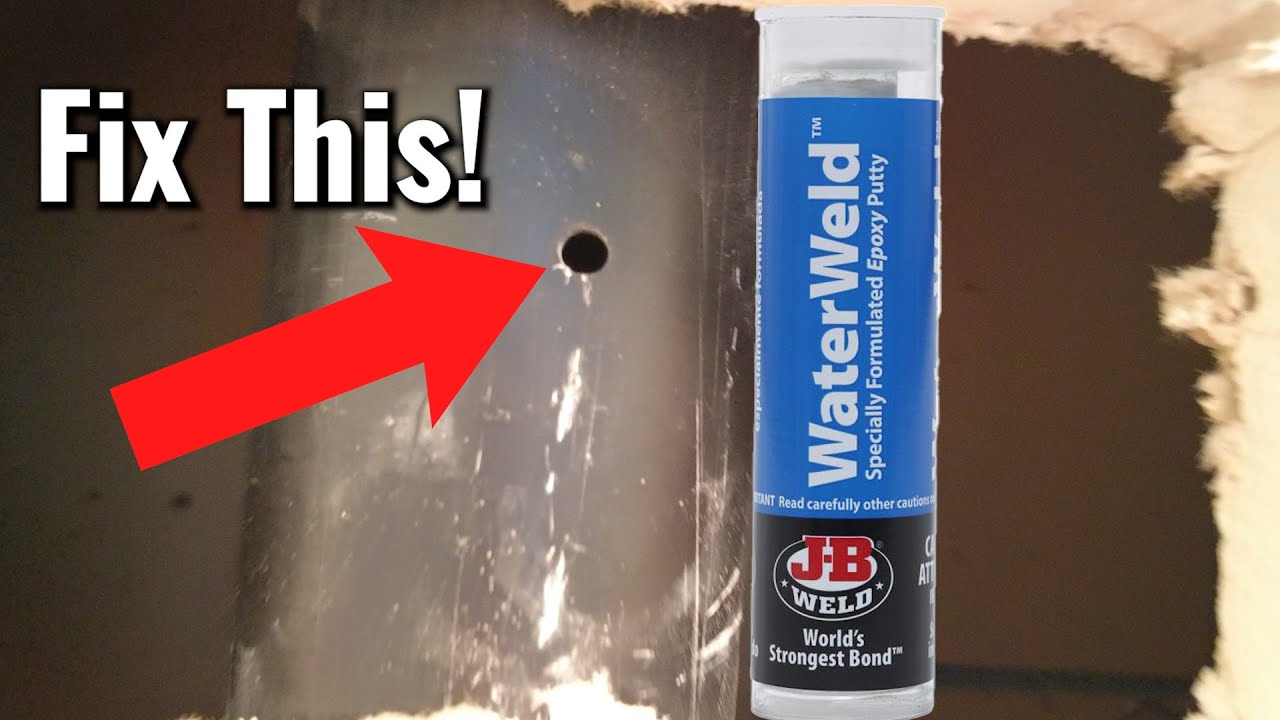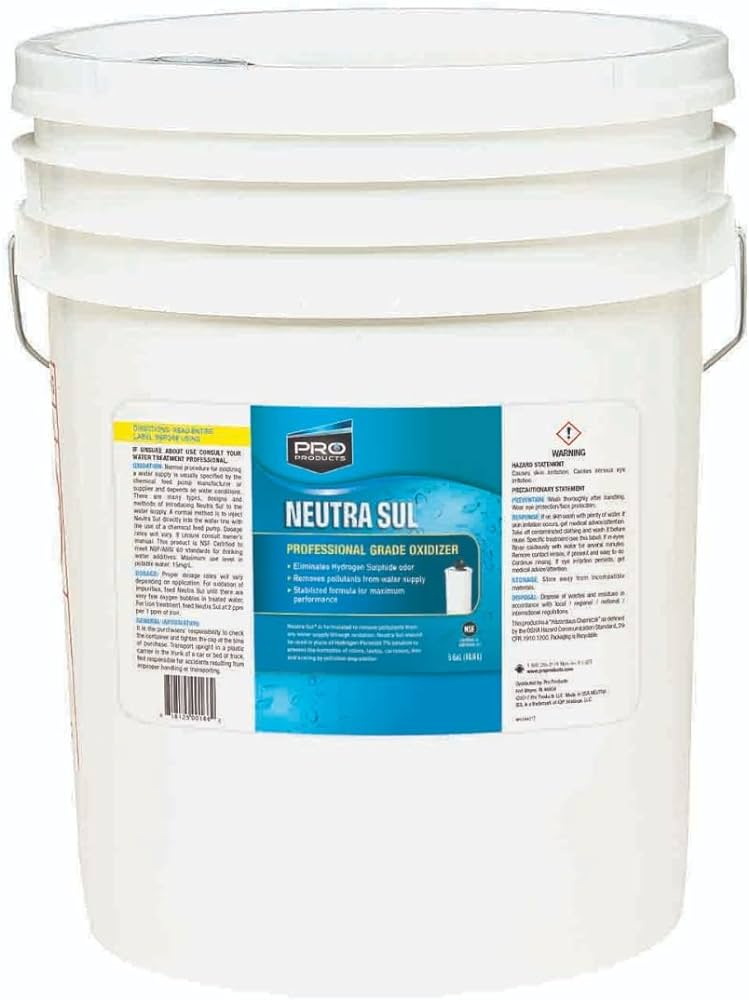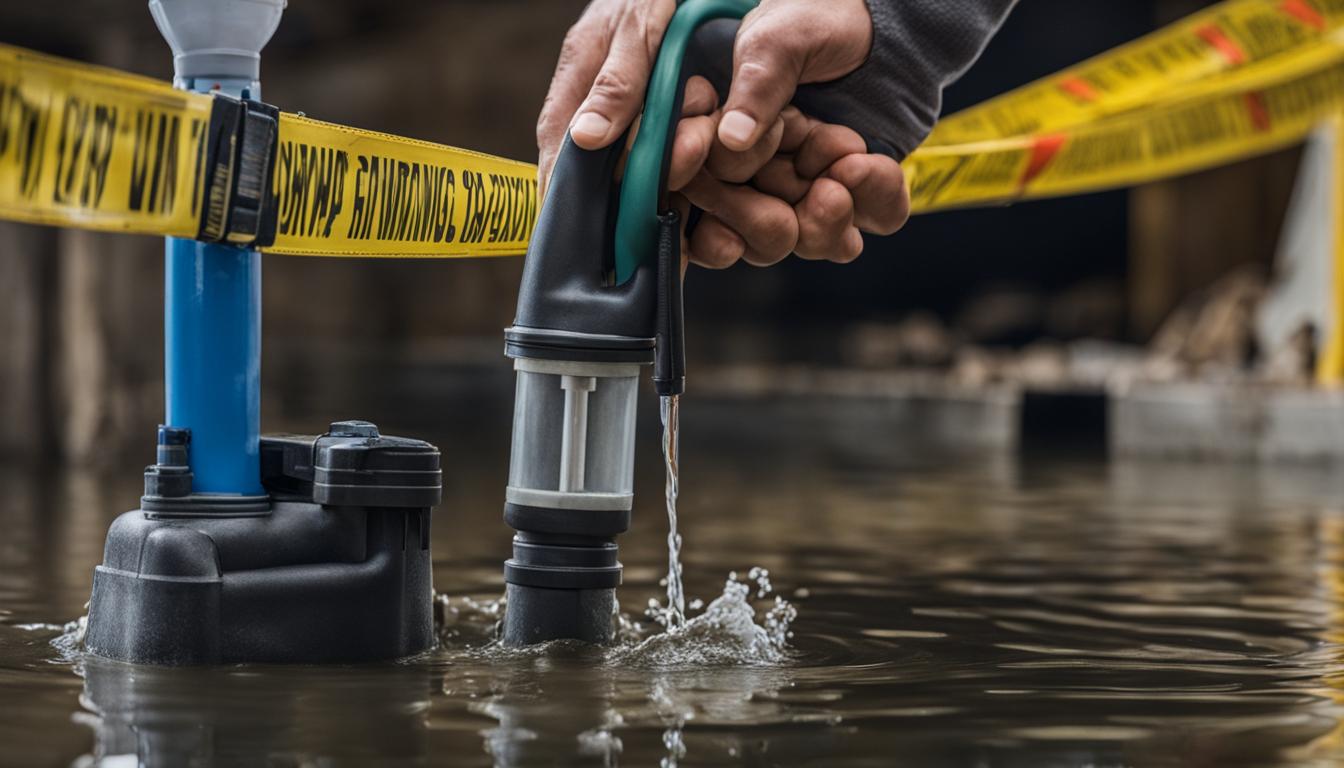To fix a leaking PVC joint without cutting, you can use epoxy or self-fusing pipe tape. Epoxy is a putty or viscous liquid that can be applied to repair the joint and seal the leak.
Clean and dry the affected area before applying the epoxy, ensuring no water can reach the damaged area. Self-fusing pipe tape forms a compression seal over the leak and can be effective for small leaks in a pipe or at a joint.
Stretch the tape around the pipe, overlapping it to create a watertight seal. Both methods provide simple and effective solutions to fix a leaking PVC joint without the need for cutting. A leaking PVC joint can be a frustrating problem, but it doesn’t always require cutting and replacing the joint. We will discuss two methods to fix a leaking PVC joint without cutting. Both methods, using epoxy or self-fusing pipe tape, offer simple and effective solutions to seal the leak and restore the integrity of the joint. By following the steps outlined for each method, you can successfully repair a leaking PVC joint and prevent further water damage.
Methods For Fixing Leaking Pvc Joints
Leaking PVC joints are a common plumbing issue that can often be fixed without the need for cutting and replacing the pipes. There are several methods to repair a leaking PVC joint, each with its own advantages and considerations. Below are some effective methods for fixing leaking PVC joints.
Epoxy is a popular choice for repairing leaking PVC joints. Repair epoxy is applied as a putty or viscous liquid, forming a durable seal on the affected area. To use epoxy, ensure the damaged area is clean and dry, preventing water from reaching it. Apply the epoxy according to the manufacturer’s instructions, creating a strong bond to stop the leak.
Pipe wrap tape is a self-fusing type of tape that forms a compression seal over a leaking pipe or joint. It is effective for small leaks and is easy to use. Stretch the tape around the pipe, overlapping it to create a watertight seal, providing a quick and temporary fix until a more permanent solution can be implemented.
PVC glue can be utilized to seal joints in PVC pipes, providing a strong and reliable bond. However, it’s important to note that the glue may not be sufficient if the leak is due to a crack or hole in the pipe. In such cases, repairing or replacing the damaged section of the pipe may be necessary to completely stop the leak.
PVC epoxy is designed specifically for repairing PVC pipes and joints. This waterproof epoxy provides a strong and durable fix for leaking PVC joints. Apply the PVC epoxy to the affected area following the manufacturer’s instructions to ensure a secure and long-lasting repair.
While the aforementioned methods can provide effective solutions, they may be considered temporary fixes, especially for more significant leaks. It’s essential to assess the extent of the damage and consider consulting a professional to determine the best course of action for a lasting repair.

Credit: diy.stackexchange.com
Using Epoxy
If you have a leaking PVC joint and don’t want to go through the hassle of cutting it, using epoxy can be a great solution. Repair epoxy is a putty or viscous liquid that can effectively seal leaks on PVC pipes and joints. By following these simple steps, you can fix the leak without cutting any part of the pipe.
Clean And Dry The Damaged Area
The first step is to clean and dry the damaged area. Make sure to remove any debris or dirt that may interfere with the epoxy’s ability to adhere to the pipe. Use a cloth or sponge to clean the surface thoroughly, and ensure that the area is completely dry before proceeding to the next step.
Apply Repair Epoxy To The Leak
Once the area is clean and dry, it’s time to apply the repair epoxy. Take a small amount of epoxy and spread it evenly over the leaking joint. Use a putty knife or your fingers to apply the epoxy, making sure to cover the entire damaged area. Press the epoxy firmly against the pipe to ensure proper adhesion.
Allow The Epoxy To Cure
After applying the epoxy, allow it to cure according to the manufacturer’s instructions. This typically involves letting it dry for a specific amount of time. During this curing period, make sure that no water or moisture comes into contact with the repaired joint as it can compromise the effectiveness of the epoxy.
Once the epoxy has fully cured, you can test the joint for leaks by turning on the water supply. If no water escapes from the repaired area, then you have successfully fixed the leaking PVC joint without cutting!
Using Pipe Wrap Tape
If you’re dealing with a leaking PVC joint, pipe wrap tape is an effective fix without the need for a complete replacement. Simply clean and dry the damaged area, then stretch the tape around the pipe, overlapping to create a watertight seal.
This self-fusing tape forms a compression seal over the leak, offering a simple and efficient solution.
Clean The Area Of The Leak
Before wrapping the damaged area with pipe wrap tape, it’s crucial to clean the area thoroughly. Use a clean cloth or rag to wipe away any dirt, dust, or debris around the leak. This will ensure that the tape adheres properly and creates a watertight seal.
Make sure to dry the area completely before moving on to the next step.
Wrap The Damaged Area With Pipe Wrap Tape
Now that the area is clean and dry, it’s time to wrap the damaged area with pipe wrap tape. This self-fusing tape forms a compression seal over the leak and can be highly effective for small leaks in PVC pipes or joints.
Begin by stretching the tape around the pipe, starting a few inches before the leak and continuing a few inches past the leak. Ensure that each wrap of tape overlaps with the previous one to create a secure and watertight seal.
Press the tape firmly onto itself as you wrap it around the pipe to ensure it bonds properly and creates a tight seal. Be sure to wrap the tape tightly but not too tightly to avoid causing any damage or distortion to the pipe.
Sometimes, it may be necessary to wrap the area with multiple layers of tape for added strength and durability. This is particularly important for larger or more severe leaks. However, remember to ensure that each layer bonds properly with the previous one to create a seamless seal.
Once the damaged area is completely wrapped with the pipe wrap tape, give it a final firm press to ensure it adheres properly.
Now, your PVC joint should be sealed and protected from further leaks. However, it’s essential to monitor the repaired area and check for any signs of leakage periodically. If you notice any issues or if the leak persists, it may be best to consult a professional plumber for further inspection and repair.
:max_bytes(150000):strip_icc()/pvc-joint-repair-2718924-color-FINAL-86df124f8a7647adb2aa514759a37d39.png)
Credit: www.thespruce.com
Using Pvc Glue
When dealing with a leaking PVC joint, using PVC glue can be an effective solution to seal the leak without the need for cutting. The process involves cleaning the area of the leak and then applying PVC glue to seal the joint effectively.
Clean The Area Of The Leak
Before applying the PVC glue, it’s crucial to ensure that the area around the leaking joint is thoroughly cleaned. Use a rag or cloth to remove any debris, dirt, or moisture from the surface, allowing for better adhesion of the PVC glue.
Apply Pvc Glue To Seal The Joint
Once the area is clean, apply PVC glue generously around the leaking joint. Ensure that the glue covers the entire circumference of the joint, creating a strong and watertight seal. Press the joint together firmly for a few seconds to allow the glue to set in place securely.
Using Pvc Epoxy
When it comes to fixing a leaking PVC joint without cutting, using PVC epoxy can be an effective solution. PVC epoxy is a repair putty or viscous liquid that can be used to seal and repair leaks on PVC pipes and joints. With a few simple steps, you can easily fix the leak and ensure a reliable and long-lasting repair.
Clean And Dry The Damaged Area
To start the repair process, it is crucial to clean and dry the damaged area. Remove any dirt, debris, or moisture that may prevent the epoxy from adhering properly. Use a clean cloth or rag to wipe the area and ensure it is completely dry before proceeding.
Apply Pvc Epoxy To The Joint
Once the damaged area is clean and dry, apply the PVC epoxy directly to the leaking joint. Use a putty knife or your fingers to spread a generous amount of epoxy over the affected area. Make sure to cover the entire joint and create a thick, even layer of epoxy.
Allow The Epoxy To Cure
After applying the epoxy, allow it to cure according to the manufacturer’s instructions. This typically involves letting the epoxy sit undisturbed for a specific period, allowing it to harden and create a watertight seal. Be patient and avoid disturbing the repaired joint during this curing process to ensure the best possible outcome.
By following these simple steps, you can easily fix a leaking PVC joint without the need for cutting. Using PVC epoxy provides a quick and effective solution for sealing leaks and ensuring the integrity of your plumbing system. Remember to clean and dry the damaged area, apply the epoxy, and allow it to cure properly for the best results. With this method, you can save time and money by avoiding the need to replace the entire pipe or joint.
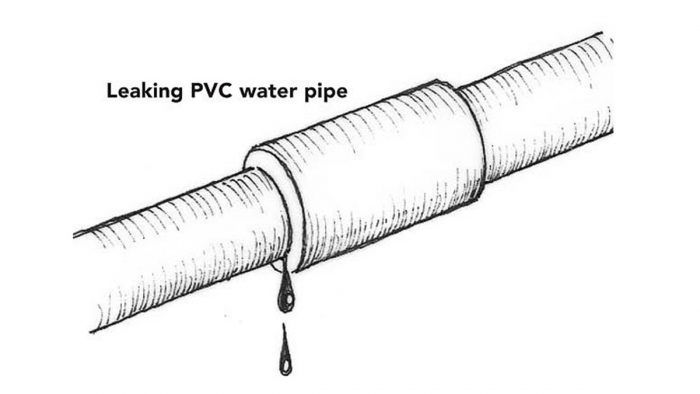
Credit: www.finehomebuilding.com
Temporary Fixes
When it comes to fixing a leaking PVC joint without cutting, temporary fixes can save you time and effort. These solutions can help seal the leak and prevent further damage until a more permanent solution can be implemented. Here, we will look at three temporary fixes: Using Fiberglass Resin Tape, Using Epoxy Putty, and Using Silicone Repair Tape.
Using Fiberglass Resin Tape
One temporary fix for a leaking PVC joint is to use fiberglass resin tape. This tape is designed to provide a watertight seal and can be easily applied to the leaking joint. Here’s how:
- Clean and dry the area around the leaking joint.
- Wrap the fiberglass resin tape tightly around the joint, covering the leak.
- Ensure that the tape extends beyond the leak on both sides.
- Press the tape firmly against the joint to form a secure seal.
- Wait for the recommended curing time before testing for leaks.
Using Epoxy Putty
Epoxy putty is another temporary fix that can be used to repair a leaking PVC joint. This putty is a viscous liquid or putty-like substance that can be applied to the leak to form a waterproof seal. Follow these steps:
- Clean and dry the damaged area, ensuring that no water can reach the affected joint.
- Mix the epoxy putty according to the manufacturer’s instructions.
- Apply the putty to the leak, making sure to cover the entire affected area.
- Smooth out the putty to ensure a tight seal.
- Allow the putty to cure completely before testing for leaks.
Using Silicone Repair Tape
Silicone repair tape is a flexible and self-fusing tape that can be used to temporarily fix a leaking PVC joint. It forms a tight seal when wrapped around the joint, preventing water from seeping through. Use the following steps:
- Clean and dry the area around the leak.
- Stretch the silicone repair tape around the joint, overlapping the tape as you wrap.
- Make sure the tape bonds to itself to create a watertight seal.
- Apply firm pressure to ensure the tape adheres securely.
- Allow the tape to set before testing for leaks.
Using these temporary fixes, you can quickly address a leaking PVC joint without the need for cutting or replacing the pipe. While these solutions provide a temporary fix, it is important to remember that they may not provide a long-term solution. Therefore, it is advisable to contact a professional plumber to assess and address the issue permanently.
Frequently Asked Questions Of How To Fix Leaking Pvc Joint Without Cutting
Can You Add Glue To A Leaking Pvc Joint?
Yes, you can use epoxy or PVC glue to repair a leaking PVC joint. Clean and dry the damaged area first, ensuring no water can reach it. Apply the epoxy or glue to the joint, following the manufacturer’s instructions. Keep in mind that if the leak is from a crack or hole in the pipe, additional repairs may be needed.
How Do You Fix A Leaky Pipe Joint Without Removing It?
To fix a leaky pipe joint without removing it, you can use self-fusing pipe tape. Wrap the tape around the damaged area, overlapping it to create a watertight seal. Another option is to use PVC glue to seal the joint, but if the leak is coming from a crack or hole in the pipe, you may need to repair or replace the damaged section.
Will Pvc Glue Stop A Water Leak?
Yes, PVC glue can be used to seal joints in PVC pipes. However, if the leak is from a crack or hole in the pipe, the glue alone may not be enough to stop it. Repair or replacement of the damaged section may be necessary.
What Is The Best Way To Repair A Leaking Pvc Solvent Weld Joint?
To repair a leaking PVC solvent weld joint, use PVC epoxy. Clean and dry the damaged area, then apply the epoxy to seal the joint. This solution is waterproof and can fix small leaks in just a few minutes. Avoid cutting the pipe by using this simple and effective method.
Conclusion
Fixing a leaking PVC joint without cutting it out can be a straightforward task with the right tools and techniques. Whether using epoxy, pipe wrap tape, or PVC glue, there are various methods to address the issue. By following the proper steps, you can effectively repair the leak and prevent any further damage, ultimately saving time and money on unnecessary replacements.
